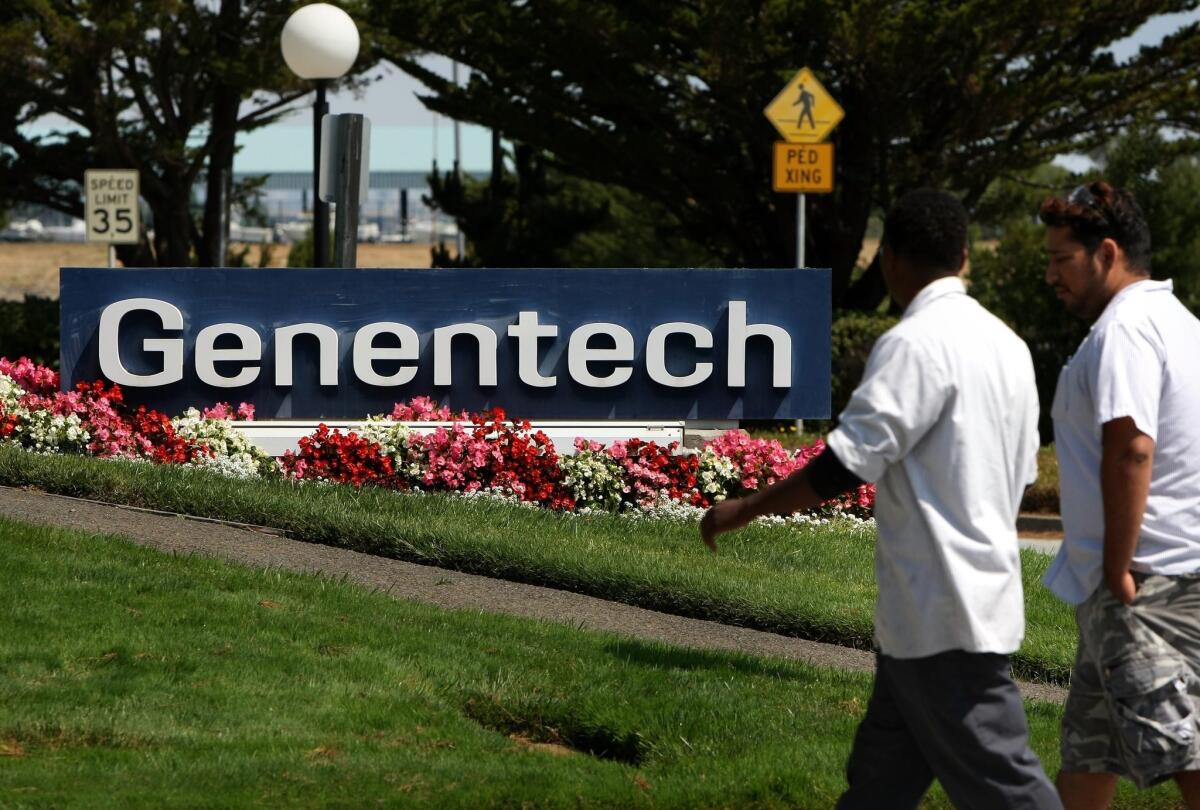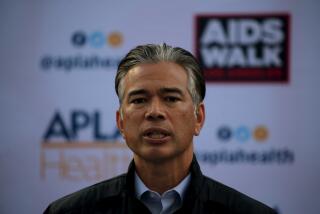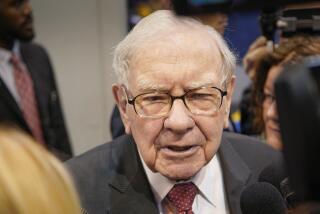Database shows $3.5 billion in industry ties to doctors, hospitals

- Share via
Pulling the curtain back on long-hidden industry relationships, the federal government revealed that U.S. doctors and teaching hospitals had $3.5 billion worth of financial ties with drug and medical-device makers in the last five months of 2013.
The details published Tuesday in a new government database have been sought for years by consumer advocates and lawmakers concerned that conflicts of interest in the medical profession are jeopardizing patient care and costing taxpayer-funded health programs.
------------
FOR THE RECORD:
Doctor payments: An Oct. 1 article in the Business section on payments made to doctors and hospitals by drug and medical device firms misstated some data from the general payments made by two companies. Allergan Inc. of Irvine paid out $24.2 million —not $17.6 million. Amgen Inc. of Thousand Oaks paid $9.5 million -- not $7 million.
------------
This first batch of payment data covers just five months of 2013, but it shows the extensive ties medical companies have forged with doctors and academic medical centers across the country. About 546,000 U.S. physicians and 1,360 teaching hospitals received some form of compensation.
California doctors and hospitals received 18% of the U.S. total, or $638 million, for the five-month period.
In all, the data show nearly $2.5 billion in direct payments to medical providers — with 60% of that related to research. There was an additional $1 billion reported for medical providers’ ownership stakes in companies. That includes grants from companies and money that doctors invested themselves.
Advocates have long been concerned that this corporate largess — from speaking and consulting fees to luxury trips and meals — can lead to patients getting the wrong drugs or medical procedures. Those decisions can harm patients and drive up the nation’s $3-trillion medical tab, experts warn.
Consumer advocates hailed the release of the information after years of debate in Congress and steadfast opposition from industry groups.
“This exposure will require everybody to talk about something that’s been underground,” said Lisa McGiffert, director of Consumers Union’s Safe Patient Project in San Francisco. “It’s a widespread practice that does influence the kind of care patients get.”
The database’s immediate impact for consumers may be limited. It’s difficult for consumers to search for their doctors in the data, and the government website ran into technical troubles Tuesday. Obama administration officials said improvements are underway and more data will be published in June.
The Physician Payments Sunshine Act, originally authored by Sen. Charles E. Grassley (R-Iowa), was included in the Affordable Care Act that President Obama signed in 2010 amid growing demands for more openness in the U.S. healthcare system.
In the last several years, the Obama administration has lifted some of the secrecy by publishing data on how much hospitals charge for medical procedures and how much the massive federal Medicare program pays individual physicians.
However, federal officials urged people not to rush to conclusions because financial ties between medical providers and manufacturers don’t necessarily signal wrongdoing.
The database “does not identify which financial relationships are beneficial and which could cause conflicts of interest. It simply makes the data available to the public,” said Dr. Shantanu Agrawal, a deputy administrator at the Centers for Medicare & Medicaid Services.
Indeed, physicians and academic medical centers defend industry collaboration as essential to advance research into life-saving treatments. For example, drugs and devices that companies donate to doctors to use in their research are included in the database as company contributions.
Critics also questioned the accuracy of the government data and the potential for doctors’ reputations to be tarnished unfairly. Similar complaints arose this year when Medicare published its physician payment data.
“If the information made available to the public involves dollar amounts without full context, it can lead to gotcha-style news stories and healthcare providers facing the presumption of ethical wrongdoing even when they have done nothing wrong and their work is benefiting patients,” said Mary Grealy, president of the Healthcare Leadership Council, an association of medical industry leaders.
Medical groups complained that physicians had not been given adequate opportunity to review the information before it was published.
Eeric Truumees, a spine surgeon in Austin, Texas, and a board member of the North American Spine Society, said he tried twice to log onto the federal website before Tuesday to check his data and couldn’t get through.
Federal officials acknowledged the rollout of the new database was rocky.
About 40% of the records published Tuesday don’t include physician or hospital names because they are being checked for accuracy, officials said. The bulk of those records were related to research. An additional 199,000 records are being withheld for now because they are either exempt from the reporting requirement or under dispute.
The law requires medical companies to report payments and gifts to physicians that exceed $10.
The government data show that City of Hope, a major cancer treatment center in Duarte, received $122.5 million in royalty income from drug maker Genentech, a unit of Swiss giant Roche Holding. The hospital said the royalties stem from research in the early 1980s and the money is shared among the “inventors, their labs and City of Hope and used to further support basic research.”
Botox maker Allergan Inc. of Irvine reported $17.6 million in general payments, the fourth-highest amount among companies nationwide. Biotech giant Amgen Inc., based in Thousand Oaks, listed $7 million. Those amounts don’t reflect payments for research or ownership interests.
The largest share of the money reported Tuesday related to medical research, accounting for 43% of the $3.5 billion overall. The remaining $2 billion was split fairly evenly between general payments and ownership stakes.
In recent years, pharmaceutical giants have agreed to pay billions of dollars in legal settlements with federal prosecutors to resolve claims that the companies used their financial ties with doctors to promote unapproved uses for drugs.
Grassley said the data should eventually become a valuable resource for consumers, insurers and taxpayers.
“It should empower consumers to learn whether their doctors take payments,” he said, “and if so, why and whether that matters to them.”
Twitter: @chadterhune, @noamlevey
Times staff writer Doug Smith contributed to this report.
More to Read
Inside the business of entertainment
The Wide Shot brings you news, analysis and insights on everything from streaming wars to production — and what it all means for the future.
You may occasionally receive promotional content from the Los Angeles Times.









